The Titanic Book of the Year Award.
The 2006
Titanic Book of the Year Award.
In a year of mostly mundane titles, no book received the award this year.
The 2005
Titanic Book of the Year Award.
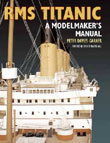 |
|
Peter Davies-Garner. RMS Titanic, A Model Maker’s Manual.
Books about modeling Titanic have been few and far between indeed, so it is a treat to see the first serious attempt succeed so completely. Davies-Garner is a full time modelmaker, as well as a professional architect. This book describes his construction of an 18 foot model, and it covers this project in remarkable detail. The author covers the project step by step, with many details and tips for modellers, no matter what size version they are working on. It is also profusely illustrated, with drawings and photos of the model under construction, along with comparison photos of Titanic herself, some of them quite scarce. Admittedly, this work is for a very specific sub-group of the Titanic reading market, but it has contributed a perspective rarely covered before, and never in such wonderful detail. To read more, see Davies-Garner's Author Page.
|
50 Years of the Best of the Best Titanic Books.
Titanic books come and Titanic books go, and scattered through the seemingly endless volume of volumes are some titles that just should not be missed. I created the Book of the Year Award to highlight these books, the best of the best. The award is given once a year, usually in mid-January, to the most outstanding new title amongst the crop of books published in the preceding year. To win, the book must have covered some aspect of the story in unusually excellent detail or contributed some unique and powerful new theory to the literature. Many of these books (although not all) are also excellent reads, written with real flair and style.
As I began to go through the history of books on the subject, it dawned on me that there have been quite a number of titles that deserve special acknowledgment. In order to showcase the gems that have been printed over the years, the award has been given posthumously, as it were, for the last 50 years, starting with Walter Lord’s seminal work A Night to Remember.
There is not an award for every year, as some years just did not contribute anything substantial enough to be included.
The 2004
Titanic Book of the Year Award.
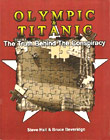 |
|
Steve Hall & Bruce Beveridge. Titanic and Olympic, The Truth Behind the Conspiracy.
Rarely has a book been so effective as both an influential text for the casual reader as well as a technological tour de force for the serious Titanic historian. Hall & Beveridge manage both. For the casual reader, who may have read about the conspiracy theory in other books and taken it at face value, this work is critical in revealing how bogus the conspiracy really is. For the serious researcher, this book provides cutting edge photographic enhancement techniques that highlight old photos of the two vessels to show just how different these supposedly identical sister ships really were. To read more, see Hall & Beveridge's Author Page.
|
The 2003
Titanic Book of the Year Award.
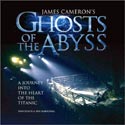 |
|
Don Lynch & Ken Marschall. Ghosts of the Abyss. A Journey Into the Heart of the Titanic.
The companion book to James Cameron's expedition to the Titanic site to film the wreck as never before. The project was a triumph of engineering achievement. Not only did Cameron film the exterior of the wreck with startlingly clear and vivid images, he used new underwater technology to explore deep into the wreck, bringing to light sections of the interior that have not been seen by human eyes since the ship sank over 90 years ago. Lynch's book gives the reader an insider's look at the the expedition from his point of view as one of the experts who went along with Cameron and dove to the wreck with him.
|
The 2002
Titanic Book of the Year Award.
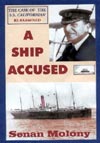 |
|
Senan Molony. A Ship Accused. The Case of the S.S. Californian: Re-Examined.
By for, the most thorough, thought provoking pro-Lord book ever published. In the course of some 50 chapters, the author takes on one issue at a time, be it rockets, masthead lights, dead reckoning positions, you name it. He then brings together all the testimony about that issue, compares and contrasts the evidence, and sums up with his conclusion. The march of facts is enormous, at times it is downright numbing, but Molony’s dogged step by step approach never waivers. The result is the most compelling case ever presented that the Californian was a Ship Wrongfully Accused.
|
The 2001
Titanic Book of the Year Award.
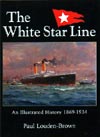 |
|
Paul Louden-Brown. The White Star Line, An Illustrated History.
This book was originally printed in 1991 as a short, softbound work. The 2001 revised edition is not only twice as big, but at least twice the volume making it, for all intents and purposes, an entirely new work. It is by far the most comprehensive illustrated history of the ships of the White Star Line ever made, although the text is somewhat abbreviated to make room for all those awesome illustrations.
|
The 2000
Titanic Book of the Year Award.
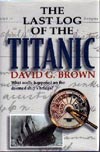 |
|
David G. Brown. The Last Log of the Titanic.
One of the few books to re-examine the mechanics of the disaster that was written by someone with personal experience in ship handling. Although the author never worked with any vessel as large as Titanic, the physics of how a ship moves remains the same no matter the ship’s size. Brown’s most startling theory is that the ship did not sink because of the buckling of the starboard plates, but rather because the ship ran up onto a submerged ice shelf. His informed explanation of this, and his other theories, makes for an argument as powerful as it is radical, while remaining completely plausible.
|
|
The 1999 Titanic Book of the Year Award.
John Wilson Foster. Titanic (The Titanic Reader).
I was not that fond of this book myself. At times it just seemed too pretentious for words. Never the less, it is an excellent look at the last eight decades of Titanic literature, with many examples from well known literary figures such as Joseph Conrad and Sir Arthur Conan Doyle, as well as accounts of survivors and witnesses.
|
|
The 1998 Titanic Book of the Year Award.
Michael McCaughan. Birth of the Titanic.
A terrific collection of photographs, primarily from the extensive Harland & Wolff archives, showing the shipyards during the construction of Olympic and Titanic. Careful selection of material, with rock solid information about the images shown, makes this one of the very best works on the two ships, their equipment and specifications.
|
|
The 1997 Titanic Book of the Year Award.
Paul J. Quinn. Titanic at Two A.M.
A detailed examination of the liner’s last 20 minutes afloat. Quinn has culled hundreds of samples of testimony, mostly taken from the American Senate investigation, and sorted them into a coherent timeline. It is a particular accomplishment considering the chaotic atmosphere rampant on the ship this late in the sinking. Add in the author’s color illustrations of the events and the combination is a unique and compelling account.
|
|
The 1996 Titanic Book of the Year Award.
Vera & John Gillespie. The Titanic Man, Carlos F. Hurd.
It is not often that someone comes up with an entirely original angle on the Titanic story, but by resurrecting the account of Carlos Hurd, these authors have done just that. Hurd was a World newspaper reporter who happened to be a passenger on the Carpathia as the ship was rescuing the Titanic survivors. This book tells the amazing story of Hurd’s attempt to get the story from the survivors, dodging the attempts of the Carpathia’s crew to block him at every turn.
|
|
The 1995 Titanic Book of the Year Award.
D.E. Bristow. Titanic, Sinking the Myths.
Another author who has the distinction of bringing fresh material to the Titanic story. Bristow did a tremendous amount of research in areas ignored by most other historians, particularly in the German language material. As such her book is a gold mine of new information. The author has strong views, and proposes some radical theories. I disagree with some of her conclusions, but others are very intriguing. One of her most important contributions, perhaps, is the very first chapter, which is nothing less than a primer on the jargon of 1912 naval history and terminology. It should be required reading for anyone interested in the Titanic saga.
|
|
The 1994 Titanic Book of the Year Award.
Donald Hyslop, Alastair Forsyth & Sheila Jemima. Titanic Voices, Memories from the Fateful Voyage.
This is another book that is not one of my favorites. I found the format jarring, with the authors’ text conflicting with, rather than complimenting the accounts of the survivors. Still, the volume of firsthand information from the included letters and oral histories, much of it previously unpublished, is enormous. Plus the photographic record in this book is really quite spectacular.
|
|
The 1993 Titanic Book of the Year Award.
Leslie Reade. The Ship that Stood Still. The Californian and Her Mysterious Role in the Titanic Disaster.
Unlike other author’s books on this subject, Reade believed the Californian was close enough to Titanic to have rescued everyone, and through the most thorough investigation of the evidence up to this time, he makes a case that is very powerful. On the down side, Reade does tend to highlight testimony that supports his claims, and ignore or belittle that which does not. Still, of the three major works on the subject up to this point, Reade does the best job of bringing the many conflicting details into the most coherent whole. He makes a compelling case that the Californian was indeed the infamous mystery ship.
|
|
The 1992 Titanic Book of the Year Award.
Don Lynch & Ken Marschall. Titanic, An Illustrated History.
This book was the first major overview of the entire Titanic story to be published since the discovery of the wreck in 1985, and as such had much new material to bring to the reading public. Titanic historian Don Lynch does a masterful job of telling the entire story from the building of the ship to the wreck dives of the Americans, French and Russians in the late 1980s. Married to the excellent, very readable text is a spectacular selection of photographs, plus artwork by maritime artist Ken Marschall. When someone is looking for a good general introduction to the Titanic saga, this book is one of the first I recommend.
|
|
The 1989 Titanic Book of the Year Award.
John P. Eaton & Charles A. Haas. Falling Star. Misadventures of White Star Line Ships.
The Titanic disaster was hardly the first, or last mishap to befall a White Star ship. In this well researched work, author’s Eaton & Haas recount the many trials and tribulations of the line’s ships over the years. Each chapter relates the story of one major incident, while relatively minor mishaps are mentioned in short vignettes at the end of each chapter.
|
|
The 1988 Titanic Book of the Year Award.
George Behe. Titanic, Psychic Forewarnings of a Tragedy.
Over the years, there have been a number of books covering the psychic angle of the disaster, and most have been so much who-ha as far as I was concerned. Behe, however, brings redemption to the field by taking a critical look at the host of premonitions and forewarnings to supposedly haunt this disaster. His extensive research into these events allows him to separate them into three separate categories: coincidences and hoaxes, possible psychic events, and probable psychic events. If you are a confirmed Skeptic, like me, even the probable events will seem unlikely. But by showing the outright hoaxes and coincidences for what they are, the author lends honest credibility to some of the other events that are harder to explain.
|
|
The 1987 Titanic Book of the Year Award.
Dr. Robert D. Ballard & Rick Archbold. The Discovery of the Titanic.
The amazing saga of the American-French endeavor that finally found the Titanic (and lest we forget, this was a joint effort for which both countries can be justifiably proud). The book actually covers two dives to the wreck, the initial September, 1985 expedition which found the ship, and the follow-up exploratory dive in the summer of 1986. It is a fascinating look at the challenges of exploring the ocean at this depth, and with the haunting photographs of the great ship now rusting quietly on the bottom of the Atlantic, it is a powerful testament to the tragedy that stunned the world in 1912.
|
|
The 1986 Titanic Book of the Year Award.
John P. Eaton & Charles A. Haas. Titanic, Triumph and Tragedy.
For many, Eaton & Haas are the predominant Titanic historians of the late 20th century. They have cowritten quite a number of books on the subject, but this one is generally considered to be their best. It is a massive compilation of text and images. I found their writing style to be rather dry, but the volume of information is just extraordinary.
|
|
The 1984 Titanic Book of the Year Award.
Patrick Stenson. “Lights”. The Odyssey of C.H. Lightoller.
A spectacular recreation of the adventurous life of Titanic’s second officer. Lightoller’s life reads like an adventure story that would put most fiction characters to shame. Stenson captures the highlights of Lightoller’s (very scarce) autobiography, and adds much more by continuing the story beyond World War One (where the autobiography ended) through Lightoller’s peaceful death in the 1950’s. Some have faulted Stenson for not capturing the impish side of Lightoller’s character, a not unwarranted criticism, but that is a minor flaw. This book is wonderful reading.
|
|
The 1983 Titanic Book of the Year Award.
Richard Brown. Voyage of the Iceberg.
The story from the iceberg’s point of view. Hokey as that sounds, Brown has written a compelling account of the long journey the most famous iceberg in history took from its calving in Baffin Bay until its rendezvous with the Titanic eighteen months later.
|
1982: none.
1981: none.
1980: none.
|
The 1979 Titanic Book of the Year Award.
Wyn Craig Wade. Titanic, End of a Dream.
The story of the United States Senate Inquiry into the disaster. Wade’s book debunks the myths surrounding that investigation, especially as they related to the Inquiry’s mastermind, Senator William Alden Smith of Michigan. For decades, Smith had been portrayed as little more than a pompous fool whose ignorance of ships and shipping had turned the American investigation into a laughing stock. In his zeal to right the perceived injustice, the author occasionally swings too far to the other extreme, practically canonizing the senator at times. The excesses are not themselves that excessive though, and the author achieves his goal of setting the record straight, showing that Smith, with all his faults and virtues, was the right man in the right place at the right time. Plus this is another title that is written with real style. It is a pleasure to read.
|
|
The 1976 Titanic Book of the Year Award.
Walter Lord. A Night to Remember, Illustrated Edition.
This is probably the only book that will ever rate two awards. But the illustrated edition of A Night to Remember truly does stand out from the original edition as it is packed with photographs and drawings. Now-a-days, extra illustrated books are common, but when this book was released there was nothing else like it available with such a wealth of images.
|
|
The 1974 Titanic Book of the Year Award.
Arnold Watson. Titanic Crew List.
Watson was the first to extensively research, correct and publish an updated list of the ship’s crew since the ones that were done for the investigations in 1912. Those original lists were done under a deadline, and without all the facts easily available resulting in quite a number of errors. Watson’s list forms the foundation for all the work carried on in the field to this day. In 1984, he came out with an updated and expanded book on this subject, Roster of Valor, The Titanic Halifax Legacy.
|
1973: none.
1972: none.
1971: none.
|
The 1970 Titanic Book of the Year Award.
Shipbuilder Magazine. Ocean Liners of the Past. Volume One: White Star Triple-Screw Atlantic Liners Olympic and Titanic. 1st modern edition.
At the time of their launching, Olympic and Titanic were considered engineering marvels. Shipbuilder Magazine was one of the leading publications of the period detailing the advances in the shipbuilding world. They printed a special edition exclusively on the two White Star giants in 1911. It was packed with text, diagrams, and drawings illustrating the technical details of every aspect of these two ships from the interior decor to the electrical and mechanical systems. That original edition is long out of print and quite scarce and expensive. The Ocean Liners of the Past reprint was the first reissue of this technical archive to make the information available to a modern audience.
|
|
The 1969 Titanic Book of the Year Award.
Geoffrey Marcus. The Maiden Voyage.
Up to this time, no one had tackled the task of a comprehensive account of the entire Titanic saga from beginning to end. Marcus was the first to tell the complete story, from the building of the ships, to the maiden voyage, the disaster, the inquiries, and the aftermath. This work is one of my very favorite books on the subject; not only is the volume of information incredible, but the writing style flows with great style. This work is right up there with Walter Lord’s book as one of the most readable accounts ever printed on the subject.
|
1968: none.
1967: none.
1966: none.
|
The 1965 Titanic Book of the Year Award.
Peter Padfield. The Titanic and the Californian.
Padfield was the first to publish a book on this incredibly contentious subject. Was there a ship within close proximity to the sinking Titanic, a ship that could have rescued everyone if only it had responded. And if there was such a ship, was it the Californian? Both the American and British inquiries believed it was and damned her captain, Stanley Lord for not acting. The author believes that Lord was innocent of the charges of negligence. His book sets out the basic arguments explaining why he felt Californian’s captain was unfairly condemned. If you are interested in this subject, Padfield’s book is required reading in understanding the background of the debate.
|
|
The 1964 Titanic Book of the Year Award.
Roy Anderson. White Star.
The definitive history of the White Star Line. This impressive work follows the story of the company from its beginnings in 1849 as a sailing ship firm on the Australian run, to its transformation into one of the predominate lines on the Atlantic passenger and mail service, to its disastrous management after the Great War, which concluded with the company’s final bow when it was merged with its former rivals Cunard in 1934. White Star is more scholarly than most books relating to the Titanic, but it is still very readable. Although there is a good deal of information about the ships themselves, the focus of this book is definitely the story of the shipping company. In this focus, it has never yet been equaled.
|
|
The 1961 Titanic Book of the Year Award.
Wilton J. Oldham. The Ismay Line. The White Star Line and the Ismay Family Story.
This work was not only the authorized biography of the two Ismays, J. Bruce and his father, Thomas, but it was also the first history of the White Star Line to be published. As you might expect from the family biographer, this book relates the Ismay story with the kindest possible slant. Never the less, Oldham had complete access to all the Ismay family papers with the result that this is one of the best researched books on the White Star Line ever written.
|
|
The 1960 Titanic Book of the Year Award.
Jack Winocour (editor). The Story of the Titanic as Told by its Survivors.
This immensely useful book first brought together the accounts of some of the more prominent survivors of the disaster, most of which had not been reprinted for many decades. It contains the complete text of second class passenger Lawrence Beesley’s book and first class passenger Archibald Gracie’s book, the six relevant chapters from the biography of Titanic’s second officer Charles Lightoller, and the wireless man Harold Brides’ account as printed in the New York Times.
|
1959: none.
1958: none.
1957: none.
1956: none.
|
The 1955 Titanic Book of the Year Award.
Walter Lord. A Night to Remember.
The great granddaddy of all Titanic books. Lord’s work is full of information, a great deal of it from the words of the survivors themselves, as the author interviewed every survivor he could find. It is also enthralling to read and ranks to this day as one of best written books ever published on the subject. Right from the opening line the book just grabs you. Would there ever have been a renaissance in Titanic interest if not for this book?
|
|